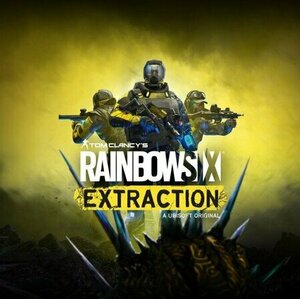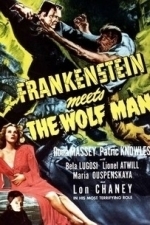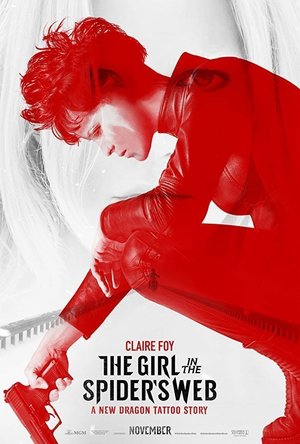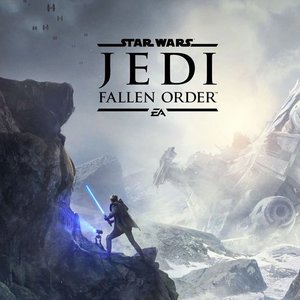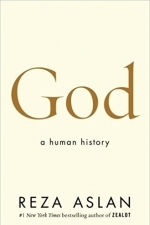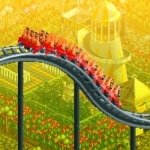
RollerCoaster Tycoon® Classic
Games and Entertainment
App
RollerCoaster Tycoon® Classic is a new RCT experience, combining the best features from two of the...

Baseball & Softball Pocket Coach
Sports and Health & Fitness
App
A tool for youth baseball coaches, to save you tons of time and keep you organized and informed....

TeacherTool 5
Education and Productivity
App
TeacherTool is a solution for teachers that combines three functions into one - digital calendar,...
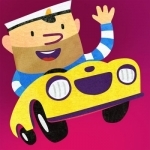
Fiete Cars
Education and Games
App
In Fiete Cars the children are the master builders. In this app kids can create their own car game....

Fiete Puzzle - Kids Games with Animals
Education and Games
App
The game Fiete Puzzle lets children discover cute animated animals in beautiful picture book...
Gareth von Kallenbach (980 KP) rated the PC version of Tom Clancy's Rainbow Six: Extraction in Video Games
Jan 26, 2022
The series features intense squad-based action as players form teams to infiltrate, extract, eliminate, and survive various missions.
Using stealth, tech, weapons, and patience; players have to find the best way to enter a location, avoid or eliminate enemies, and complete objectives while working as a cohesive unit.
This time around the enemy is a parasitic alien race and players must form three-person squads or venture through the locales solo or with a single partner.
Players will select an operative; each with a primary and secondary weapon and two tactical devices such as grenades, mines, revive shots, armor, and drones. As time goes on and players level up; new technology can be researched and used as having the right loadout is essential. Players will also have unique skilsl ranging from gun emplacements, medical, cloaking, and more which can be used in a limited situation and must be replenished as the missions unfolds.
Missions are set in three zones such as New York, San Francisco, Alaska, and more become available as players reach a certain level and naturally they become progressively harder and more intense.
Each zone has random missions and when players select a locale, difficulty level, and their operative; they will encounter missions ranging from elimination, extraction, scanning, and targeting specific strategic locales.
The enemy is very cunning and ruthless and can cloak, shape-shift, and explode amongst their myriad of hostile actions, and players must attack, evade, and work with one another to complete the missions and survive. At the end of a level; players can opt to enter an airlock and move to the next segment or return to an exfiltration zone to end the mission.
This is where the real tactics of the game come into play as health is limited as can be ammunition so players who encounter a difficult mission where they sustain damage or lose a player have to make a hard choice. Players do not die in the game as they are enveloped with a stasis foam should they sustain enough damage.
As such the remaining team must decide to carry the downed player to an Extraction Pod or leave them behind so they can carry on or they can flee to safety. This is not always an easy decision as seeing your team decimated and barely making it to safety with only a small amount of health makes even the most determined player think twice about venturing back in.
Should a player be lost; their experience is deducted from the player and will remain deducted until the character is rescued on a future mission. Seeing your roster of skilled Operatives reduced to a couple of unproven newbies is very humbling and thankfully the maps are very detailed and engaging as players will get very used to playing in the locales frequently before new areas are made available to them.
The action of the game is intense as players can use stealth or run and gun depending on the mission and the variety of enemies and missions is good.
I do wish the Quick Play would allow players to select the skill level they would like to play in and that there was a server list to select from; that being said; at $39.99 and available on Game Pass; Rainbow Six Extraction is a great deal as the cross-play enabled game ensures plenty of players to venture into danger with but like the best games of the series; having the right group of players is essential as I have lost many players due to wild cards not following mission objectives.
Intense, engaging, and deeply entertaining; Rainbow Six Extraction delivers even if it does differ from what fans have come to expect.
4 stars out of 5
Matthew Krueger (10051 KP) rated Frankenstein Meets the Wolf Man (1943) in Movies
Oct 15, 2020
The plot: Lawrence Stewart Talbot (Lon Chaney Jr.) is plagued by a physical oddity that turns him into a crazed werewolf after sundown. His desire to rid himself of this ailment leads him to the castle owned by mad scientist Dr. Frankenstein. Frankenstein, it turns out, is now dead, yet Talbot believes that the scientist's daughter, Baroness Elsa Frankenstein (Ilona Massey), can help him. However, his quest to right himself puts him on a collision course with Frankenstein's monster (Bela Lugosi).
This was the first of a series of "ensemble" monster films combining characters from several film series. This film, therefore, is both the fifth in the series of films based upon Mary Shelley's 1818 book Frankenstein; or, The Modern Prometheus, directly after The Ghost of Frankenstein, and a sequel to The Wolf Man.
As ultimately edited and released, Frankenstein Meets the Wolf Man is told in two almost equal parts. The opening scenes tell the story of Talbot's resurrection, killing spree, hospitalization, and escape across Europe. Much time is spent with a secondary policeman, Inspector Owen, and on scenes with a desperate Talbot hospitalized by Dr. Mannering. The discovery of the Monster and pursuit of Dr. Frankenstein's scientific notes do not begin until thirty-five minutes into the film. The second half introduces the Monster, Elsa, and the village of Vasaria and its inhabitants.
Immediately following his success in Dracula, Bela Lugosi had been the first choice to play the Monster in Universal's original Frankenstein film, but Lugosi famously turned down the nonspeaking, heavily made-up role: as conceived by the original director Robert Florey, the Monster was nothing more than a mindless killing machine and not suitable for Lugosi's rising stardom and career as a leading actor, and the original make-up for Lugosi's screen test was closely based on the doll-like clay robot in The Golem.
Eight years later, Lugosi joined the film as the Monster's twisted companion Ygor in Son of Frankenstein. He returned to the role in the sequel, The Ghost of Frankenstein, in which Ygor's brain is implanted into the Monster (now Chaney), causing the creature to take on Lugosi/Ygor's voice. After plans for Chaney to play both the Monster and the Wolf Man in the next film fell through for logistical reasons (Chaney demurred), the natural next step was for Lugosi, who turned 60 during the film's production, to take on the part that he once was slated to originate.
The original script — and indeed the film as originally filmed — had the Monster performing dialogue throughout the film, including references to the events of Ghost and indicating that the Monster is now blind (a side effect of the brain transplant as revealed at the end of the previous film, and the reason for his iconic stiff-armed "Frankenstein walk"). According to Siodmak, a studio screening audience reacted negatively to this, finding the idea of the Monster speaking with a Hungarian accent unintentionally funny (although the Monster spoke with Lugosi's voice at the end of Ghost, the audiences had been carefully prepared for it by the plot of the film). This has been generally accepted as the reason virtually all scenes in which Lugosi speaks were deleted (though two brief scenes remain in the film that show Lugosi's mouth moving without sound). All references to his being blind were also eliminated, rendering the Monster's groping gestures unmotivated for those unfamiliar with the ending of the previous film. Close-ups of Lugosi's eyes during the revitalization scene and his evil, knowing leer to Patric Knowles were supposed to indicate that his vision had been restored, but in the ultimate context of the film this means nothing. Consequently, Lugosi is onscreen literally for only a few minutes, leaving the Wolf Man as the film's primary focus.
Lugosi suffered exhaustion at some point during the filming, and his absence from the set, combined with his physical limitations at age 60, required the liberal use of stand-ins.
This would be the final Universal horror film in which the Monster played a major role; in the subsequent films The House of Frankenstein and House of Dracula, the Monster, played by Glenn Strange, is brought back to life only in the final scenes (in the 1948 Universal comedy Abbott and Costello Meet Frankenstein (the second and final film in which Lugosi plays Dracula), Strange has a larger role and the creature once again speaks, albeit with very limited dialogue, twice muttering, "Yes, Master."). It was also the last Universal horror film to feature an actual member of the Frankenstein family as a character.
A tribute to this meeting of two horror film legends happens near the beginning of the film Alien vs. Predator, when this film is seen playing on a television at the satellite receiving station. In the US version of the 1962 film King Kong vs. Godzilla (another pairing of prominent monsters), the music from the fight scene at the end of the film also plays during the final fight between Godzilla and Kong.
So the reason why this movie was a huge disappointments that it was universal first ensemble. A meet between two iconic monsters and boy did it disappointment. Their didnt meet until the last 5 minutes, no scratch that the last minute. Yes you read that right, the last minute their meet. Huge disappointment. It was also slow. I dont recordmend watching this one and skip it. The only reason im giving it a 5 is because of Lon Chaney Jr. and Bela Lugosi.
Bob Mann (459 KP) rated The Girl in the Spider's Web (2018) in Movies
Sep 28, 2021
Now though we have “A New Dragon Tattoo Story” (as the film’s subtitle clumsily declares) based on the book by David Lagercrantz, who took over the literary franchise after the untimely death of Stieg Larsson. Picking up the reins as Salander is that most British of actresses Claire Foy…. which seems an odd choice, but one which – after you get past the rather odd accent – she just about pulls off.
The Plot
Lizbeth Salendar (Claire Foy) has an interesting hobby. She is a vigilante, like a lesbian Batman, stalking the streets of Stockholm putting wrongs right where abusive boyfriends/husbands are concerned.
She is also a hacking machine for rent. And Frans Balder (Stephen Merchant) has a problem. He has invented a software program that allows its user to control every nuclear warhead in the world from a single laptop (cue every other Bond/24/Austin Powers script ever written). But he has had second thoughts and wants it back from its resting place on the server of the NSA’s chief hacker, Ed Needham (Lakeith Stanfield). Balder recruits Salander to recover it, but when things go pear-shaped Salander finds herself on the wrong side of both the law and the encircling terrorist “spiders”.
The Review
Scandi-dramas work best when they exploit the snow; maintain a sexual tension; and go dark, gritty and violent. On the plus side, “The Girl in the Spider’s Web” ticks most of those boxes adequately. Foy’s Salandar is smart, sassy and sexy, outwitting the best of the best, and only once finding her intellectual match. (If you’re a lesbian, Stockholm is most definitely the place to be: there only seemed to be one hetero-female there, and she was an adulteress).
But Salander also has a Bond-like invincibility that unfortunately tests your incredulity at multiple points. Contributing to the excitement is the stunt team, who keep themselves busy with some great car and bike chases.
So, the movie has its moments and is great to look at. But the film ends up a sandwich or two short of a smorgasbord, thanks largely to some totally bonkers plot points and more than a few ridiculous coincidences. There are without doubt an array of well-constructed set pieces here, but they fail to fully connect with any great conviction. An example of a scene that infuriates is a dramatic bathroom fight in a red-lit gloom with identical protagonists that is cut together so furiously you would need a Blu-ray slo-mo to work out what the hell is going on… and then I fear you might fail.
So it’s an A- for the Production Design (Eve Stewart, “The Danish Girl“) and the Cinematography (Pedro Luque, “Don’t Breathe“), but a C- for the director Fede Alvarez (also “Don’t Breathe“).
Avoid the Trailer
I will save my biggest source of wrath though for that major bug-bear of mine: trailers that spoil the plot.
I’ve asked before, but for a film like this, WHO EXACTLY PUTS TOGETHER THE TRAILER? I’d like to think it’s some mindless committee of marketing execs somewhere. Because I HONESTLY CAN’T BELIEVE it would be the director! (If I’m wrong though, I would point my finger at Mr Alvarez and chant “shame, shame, shame”!)
For the trailer that I saw playing in UK cinemas does it’s level best to not only drop in the key spoilers of the plot (including the climactic scene), but also spoils just about every action money-shot in the movie. It’s all so pointless. If you’ve by any chance managed to get to this point without seeing the trailer, then SAVE YOURSELVES and AVOID IT!
(The one attached below by the way is slightly – slightly! – better, including some over-dubbing of a line that I don’t think was in the film. Perhaps they realised their huge mistake and reissued it?)
The Turns
As I mentioned earlier, Claire Foy again extends her range by playing Salander really well. She is the reason to go and see the film.
The Daniel Craig part of Blomkvist is played here by Sverrir Gudnason, who was in “The Circle” (which I saw) and was Borg in “Borg McEnroe” (which I didn’t). Blomkvist really is a lazy ****, since he works for the publication “Millenium” but writes absolutely nothing for years. It must be only because the boss (Vicky Krieps) fancies him that he keeps his job. Gudnason is good enough, but has very little to do in the movie: its the Salander/Foy show. Slightly, but only slightly, more involved is Lakeith Standfield as the US intelligence man.
Given little to do in the plot. Sverrir Gudnason as the incredibly unproductive ‘journalist’ Mikael Blomkvist. (Source: Sony Pictures Entertainment)
Stephen Merchant is an odd casting choice for Balder. Not withstanding that he was brilliant when almost unrecognisable in “Logan“, here he looks far too much like his “Ricky Gervais sidekick” persona to be taken seriously: and it’s not even remotely a comedy (there is only one humorous moment in the film, a nice “clicker” gag in a car park).
Final Thoughts
I had high hopes for this film from the trailer, but I was left disappointed. It’s not classic Scandi-noir like the original “Tattoo”; and it’s not going for the black comedy angle of “Headhunters” (which I saw again last week and loved… again!). It falls into a rather “meh” category. It’s not a bad evening’s watch, but perhaps worth leaving for a DVD/cable showing.
Daniel Boyd (1066 KP) rated the PlayStation 4 version of Star Wars Jedi: Fallen Order in Video Games
Mar 1, 2020 (Updated Mar 1, 2020)
Apparently you get something that doesn't feel like Star Wars.
I have a fair number of problems with this game, so I'm going to go ahead and list them and explain why they bothered me so much during my experience playing through Fallen Order.
First of all, when this game dropped and did pretty well commercially and critically, EA were commended in the games media for having the guts to release a single-player, story based Star Wars game with no online play. When the reviews dropped just before the game's release, this news got me really hyped as I have never been much for online gaming and much prefer story based games over anything else. Now whilst EA did give us a single-player, offline Star Wars story, they did so in such a sloppy, janky, half-finished fashion.
I lost count of the amount of times that I had to restart my game because of loading errors or game breaking bugs. Almost every time I would enter a new area the characters would initially appear in a T-pose position and remain that way for a good few seconds until I approached them. Onscreen prompts would often fail to appear making the game's already confusing exploration methods even more unclear. I have not seen this much pop-in in a videogame since the first version of No Man's Sky. Almost every area was covered in murky textures upon initially entering them, with some entire structures and areas failing to render. During a few boss fights, the AI character would fail to attack me and just stand still and no matter how many blows I would land on them, their health bar would not budge until I fully reloaded the level. This sort of thing was present during every one of my play sessions and at a few points the game became almost unplayable due to it's glaring technical glitches. Also, I got this game as a Christmas gift, so it has been out for a decent amount of time. A game of this calibre, that has been out for months at this point, from a major studio like Respawn and a publisher like EA, not to mention being from a major franchise like Star Wars, - the fact that it is in the current broken state that it's in is frankly unacceptable.
The next issue I had was the story and characters in the game. The game's protagonist Cal, is an unsympathetic, whiny bitch of a character that got on my nerves every time he opened his mouth. The rest of the crew were also pretty bland, unendearing and lacking in much personality. I grew up loving the Star Wars universe, yet I found myself trying in vain to skip almost every cutscene and really not giving a crap what happens to any one of the characters. The villains were unengaging and the other side characters like Cal's master and the old dude that left holograms for Cal to find got increasingly annoying every time they appeared. The only character I found engaging throughout the whole game was Sister Merrin.
I always thought Jedi Knights were supposed to be extremely capable, powerful warriors, yet at no point in this game do you ever feel powerful in any significant way. The whole time, you feel on par with the non descript enemies that you are fighting. While I agree that the last major AAA single-player Star Wars game, The Force Unleashed was too easy, at least you felt powerful while playing as that character. The combat never feels as satisfying as it should due to the lack of dismemberment. The decision not to allow the player to chop off limbs makes it feels more like you are hitting enemy shaped piñatas with a big stick, rather than welding a laser sword of pure, raw energy. I also felt that there was a lack of variation in the combos and moves-set and found myself watching the same animations over and again no matter what combination of buttons I was mashing. Every fight in this game is hard and not in a fun,challenging way, but instead in a grinding, irritating way. The ridiculously long loading times also made dying even more frustrating. If you are going to design a game where the player is going to die frequently, you HAVE TO have a snappy respawn system in place à la Super Meat Boy or Hotline Miami. (Especially when your fucking studio is called RESPAWN, but I digress.) They were clearly going for a more defensive, methodical approach to the combat system, which is fine, but they should have given you a choice between that and a more aggressive, offensive skill tree, meaning that more play styles could be catered to. Another majorly annoying thing was the way that the game justified unlocking new skills for Cal, with him having out-of-the-blue flashbacks at seemingly random points in the story where he would suddenly remember that he could wall-run or double-jump. I hate when games do this, it feels extremely lazy and unjustified within the context of the story that is being presented. Another thing that bothered me gameplay-wise was the checkpoint system. The whole refilling your health = respawning the enemies thing felt really arcady and often broke immersion.
Something else that I hate in games is when the game tries to pretend that it is an open world game rather than a linear experience, which this game does. I don't understand why you would want to masquerade as an open world game when that mechanic has been so oversaturated for this entire generation. After you play through the game's intro and get access to the ship, you are given the impression that you can choose what order to visit each planet and progress though the game. However this is not the case. When I was first given the choice to pick a planet, I chose Dathomir as I am a big Darth Maul fan and thought it would be cool to explore his home turf. I got there and was making my way through the clear-as-mud holomap when I got to a section where I could not progress. There was a jump that I just could not make no matter how many times I tried. After eventually getting fed up I had to look up a walkthrough to find out how to progress whereupon I learned that you actually need to go to the other planet first and gain an ability to make this jump. Now even if I did design my game so poorly that I let the player go to the wrong planet on their first travel, I would have at least had the decency to put in a prompt at the un-passable jump to let the player know that they don't have the skills to progress here yet and to go to the other planet and return here later. It could have been a voiceover from a crew member or even an immersion-breaking piece of text, but something would have been nice to prevent me having to look up a walkthrough to learn this fact. Witnessing this ineptitude in game design from such a major studio was shocking. So yeah, from that point on, - lesson learned, - I just followed the checkpoints to decide what my next planet would be to travel to, but then why even give players the illusion of choice in this? Why not just usher the player automatically to the next planet they need to visit after they return to the ship?
My final and biggest issue with this game is despite it being a Star Wars game, it never really felt like Star Wars. I noticed this during the first third of the game in the some of the character designs. Some of the side characters looked more akin to something from Ratchet & Clank than from the Star Wars universe. Then as I was playing through Kashyyyk and fighting spiders and giant slugs, I'm thinking to myself, I don't ever remember Luke Skywalker doing this and that dude lived and trained in a swamp for like a year. Then the shark was well and truly jumped. Upon revisiting Dathomir and finally being able to make some progress, a character literally raises bodies from the ground for you to fight. That's right, they put zombies in a Star Wars game. I thought since Disney had taken control of Star Wars, that they were way stricter than Lucas ever was about what does and doesn't get into the Star Wars universe, so whoever greenlit this zombie shit over at Disney should really get the boot. I can't quite believe that I'm saying this, but if you want a more authentic and higher quality Star Wars videogame experience, go play Battlefront 2. Sure it may have had an extremely messy launch and been marred with controversy ever since, but at least it feels like Star Wars.
There were a sparse few things that I did enjoy. As I mentioned above, Merrin was a fairly engaging and well acted character. The Lightsaber customisation was also pretty neat. I also enjoyed the music and (SPOILERS,) the brief appearance that Darth Vader makes. However the music is only great because it's the Star Wars score and whilst Vader's appearance as an unstoppable force was cool here, I personally feel like it was done better in Rogue One.
So yeah, I kind of feel like I played a different game to everyone else. I really wanted to fall in love with this game and I kept waiting for it to win me over, but unfortunately it never did. I think that there is potential here for something better, mostly owed to the interesting time period the game is set in on the Star Wars timeline, so I really hope that they take the few good elements that were present in Fallen Order and improve upon everything else for the sequel.
Hazel (1853 KP) rated God: A Human History in Books
Nov 5, 2017
Where did religion come from? This is the question Reza Aslan, a scholar of religions, attempts to answer in his latest publication, God: A Human History. To date, Aslan has tackled subjects such as the life of Jesus of Nazareth, and the origins, evolution and future of Islam. In this book, the author journeys back to the earliest evidence of human existence and, using a mix of resources, theories and investigations, tries to determine how our ancestors conceived the idea of gods and souls. Maintaining the idea that the majority of humans think of God as a divine version of ourselves, Aslan also looks at the way our perception of life after death has altered due to the changes in our governments and cultures.
Reza Aslan claims that he, a Muslim-devout-Christian-convert-turned-Sufi, is neither trying to prove or disprove the existence of God or gods. Instead, he is providing readers with a thorough history of religion with a strong suggestion that we, as believers, have fashioned God in our image, and not the other way around.
Insisting that belief systems are inherited from each previous generation, Aslan takes a look at ancient cave drawings where he, and many other theorists, surmise that a form of religion was already well underway. Lack of written word results in a lot of speculation and hypothesis as to what these, usually animal-like, drawings represent, however, many have come to the conclusion that early humans had some form of animistic belief system.
Although not a dig at religion, after all, the author is religious himself, the following chapters bring in to question the authenticity of past and present beliefs. With reference to various psychologists, Aslan poses the theory that ancient humans may have misinterpreted dreams as evidence of a spirit realm. With no one qualified to clarify the things they did not understand, anything without a clear explanation may have been attributed to a god or gods.
As the author describes how religious ideas may have developed from these primitive beliefs to the fully detailed faiths of today, he labels the human race as anthropocentric creatures that have based their religions on human traits and emotions. By reporting in this way, it comes across that the past ideas of the soul, spiritual realms, gods and so forth could not possibly be true, yet, as the final chapters suggest, Aslan is still adamant about the existence of God.
Aslan’s narrative speeds up, finally reaching the recognizable religions of today. Beginning with the Israelites, enslaved by the Egyptians, the author explains, using biblical references, how the first successful monotheistic religion came about. However, researchers have studied the early Bible texts and are inconclusive as to whether the God worshipped by the Jews was the only divine being or whether there were others of a similar standing.
Next, Aslan explores Christianity, posing more questions than he solves, for example, is God one or is God three (i.e. the Holy Trinity)? He defines and compares the definitions of monotheism and pantheism, eventually bringing in Islam and the development of Sufism, which he is not afraid of admitting he agrees with.
God: A Human History is disappointingly short, ending with the feeble conclusion that humans are born with the ability to be convinced of the existence of a divine being and the soul, but it is our own choice to decide whether or not to believe in them. The remaining third of the book is an abundance of notes on the texts, bibliographical references, and Reza Aslan’s personal opinions about the ideas and theories mentioned in his history of religion.
Although an extensive history on the origins of religion, God: A Human History leaves readers none the wiser as to whether their belief is founded in truth or whether it is something that has evolved over time due to lack of understanding about the world. Granted, it was not the aim of the book to prove or disprove the existence of God, however, it may unintentionally sow seeds of doubt or, potentially, anger devout believers. However, there is no attempt at persuading readers to believe one thing or another, thus making it suitable for people of all religion and none.
